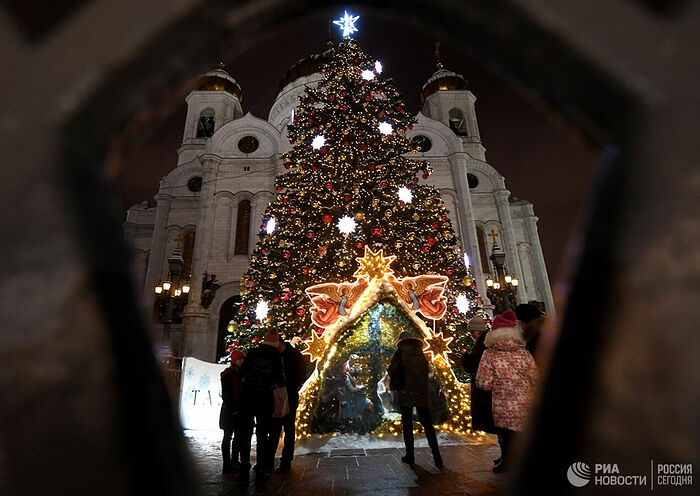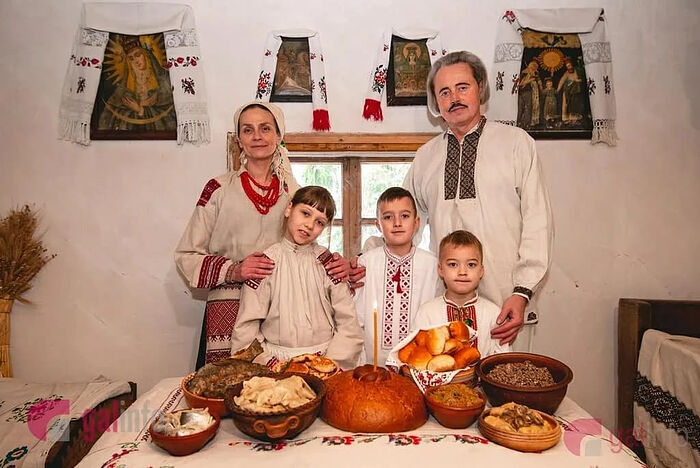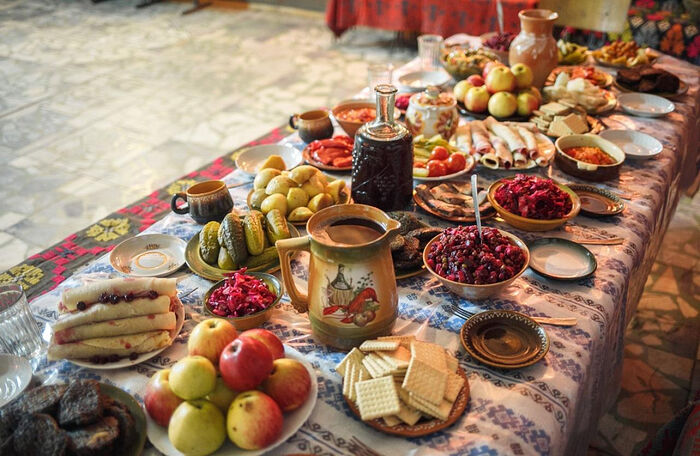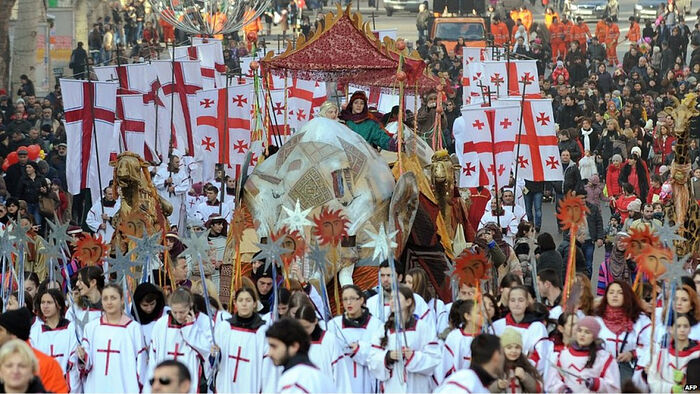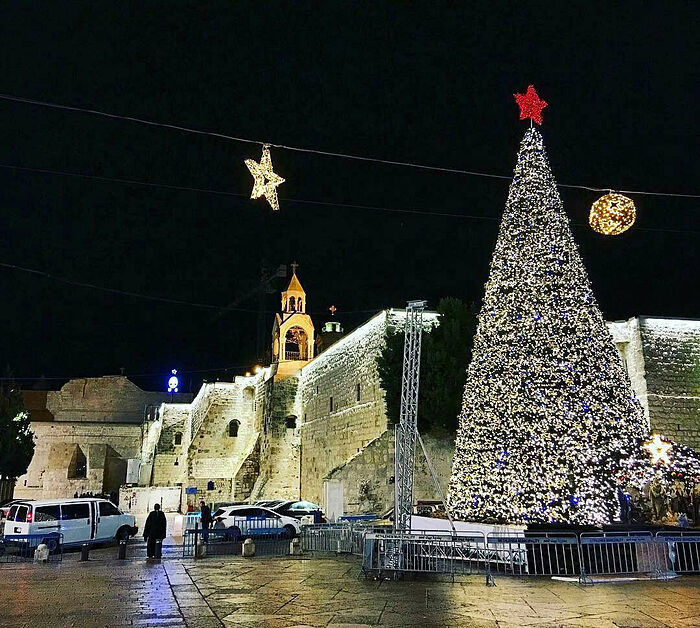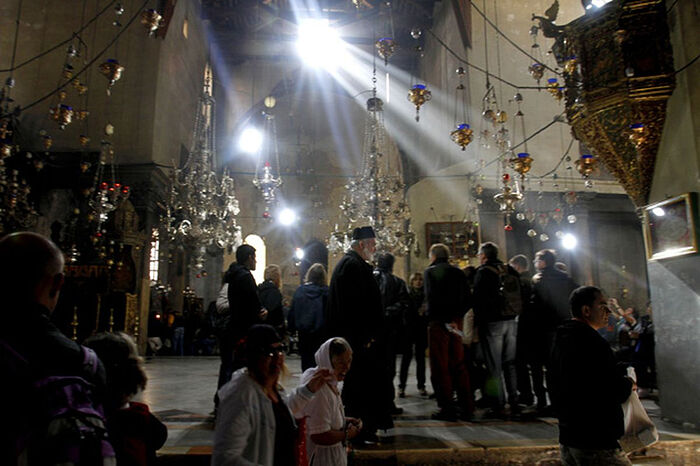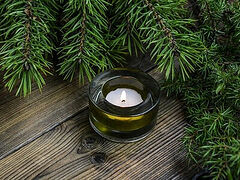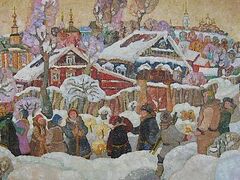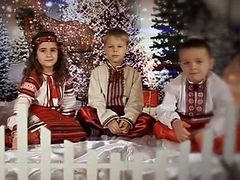Church services, festive chants (not always related to the Birth of Christ), a meal, decorations in homes and on the streets, and the exchange of gifts—these Christmas traditions are common among all the peoples of Europe. Below we will talk briefly on where the Christmas traditions came from, which of them became common in Europe, and on the special flavor of the celebration of Christmas in some areas and countries.
In Russia, the Nativity of Christ is now part of the New Year holiday. For many families the New Year party is still the most important event, while others don’t celebrate New Year’s Day and get ready for the Nativity. Presents are given depending on the customs in a particular family and can be given for both festive occasions.
In early December streets are decorated, Christmas trees are set up in public places, Christmas markets and charity fairs are held. Recently they have started to set up Nativity scenes outside churches on Christmas. A nativity scene can be made of fir branches with an icon of the Nativity of Christ inside or with figures of the Holy Family, three Wise Men, angels and animals. The material varies: from cardboard and fabric to snow and ice. There is also special Christmas performance, played with the help of puppets or by actors. They play events related to the Birth of Christ, the flight to Egypt, the Massacre of the Innocents by Herod, and the death of Herod. Previously they were associated with caroling, and now they are given at Christmas parties or fairs. The tradition of carol-singing is being revived: songs glorifying Christ and His Birth are sung. With them carolers (before the Revolution) used to go from house to house, wishing good and joy to the owners and collecting gifts in the form of treats. Now they often just go to visit family and friends while singing carols.
Before the Nativity, Orthodox Christians observe a fast, which lasts six weeks: from November 28 till January 6 inclusive.
The day before the feast of the Nativity of Christ is called Sochelnik—the Russian for Christmas Eve. The name comes from the traditional dish made on this day—sochivo (boiled wheat or rice with honey). In the old days, on Christmas Eve Russian people ate only sochivo, abstaining from any other food until Christmas. There is also a tradition of not eating anything till the first star on this day.
The celebration of the Nativity takes place on the night of January 6–7—exactly at midnight solemn services begin in churches.
The period from January 7 till the Eve of Theophany (January 18) is called Christmastide, or Svyatki in Russian. These are days of special joy that believers share with each other. At this time it is a custom among them to come to see each other and perform acts of charity. It is becoming a good tradition to exchange gifts for the Nativity and support those in difficult life situations during the festal season.
Ukraine
Christmas Eve in Ukraine is called “Holy Evening” and marked on January 6. On this day, carolers go around their villages. They act a show in which the villagers are both spectators and participants simultaneously. Approaching a house, the carolers knock on the door, and although the owners are expecting them, they ask who has come and why. The carolers in poetic form ask permission to sing carols, and the owners in poetic form give them permission. After that, Nativity events are played out and songs are sung on the doorstep. Then the carolers open a special bag, where the owners of the house pour out the prepared treats. And the carolers head for the next house.
On the Holy evening, the major dish is kutya—wheat or rice porridge with honey, poppy seeds and raisins, and uzvar—dried fruit compote. And the festal meal begins after the Christmas service. Roast goose, prunes stuffed with nuts and kalach1 must be on the table. In the south of Ukraine people were supposed to take supper (“vecherya”) to their godparents in the evening. It consisted of kalach, fruits and sweets. Godchildren greeted their godparents, gave them supper and received another kalach in return, along with sweets and money.
On the next day, one was expected to take supper to his or her midwife.
Evening gatherings and festal banquets go on until Theophany, when the winter holidays ended.
Belarus
According to the Belarusian tradition, the dinner on Christmas Eve is sumptous yet fasting, consisting of twelve dishes in honor of the twelve apostles. In the Brest region the last day before Christmas is called “Kolyada”. On this day (as among many Orthodox Christians) there is a pious tradition of abstaining from any food “till the first star.”
The most important Christmas service is held at night. In Belarus there are no specific Christmas dishes: Belarusians just break the fast, including with meat dishes.
There is a tradition of covering the festal table with hay as a reminder that Jesus Christ was born in a cave that served as a stable for domestic animals. Sometimes a tablecloth is laid on hay, and sometimes, on the contrary, a little hay is put on the tablecloth. A candle is placed in the middle of the table, which symbolizes the Star of Bethlehem. And the Christmas troparion (which reflects the essence of the feast) is sung or recited: “Thy Nativity, O Christ our God, has shone forth to the world the light of reason, for in it those who worshipped the stars were taught by a star to adore Thee, the Sun of Righteousness, and to know Thee, the Orient from on high. O Lord, glory to Thee!” On this evening, the whole family and close relatives must gather together, have a meal and sing carols, and folk songs with a Christmas theme.
Georgia
The Nativity is celebrated in Georgia with “Alilo” (from Alleluia; akin to carols) songs. The following tradition has been formed over centuries: a male choir passed through the village or town and in songs greeted the inhabitants on the Nativity. The hostess would give those who came with Good Tidings Churchkhela [a traditional Georgian candle-shaped candy.—Trans.], fruits and other treats (mainly bread, sugar and eggs). Subsequently, men were replaced by children, and money and sweets were added to the gifts. In addition, “Alilo” is also a big procession after the Christmas service, where the clergy walk with children. The procession is also attended by mummers, representing gospel characters. In Tbilisi, the procession goes to the major cathedral (in honor of the Holy Trinity) of the Georgian Orthodox Church, where the Catholicos-Patriarch meets them and gives them presents and sweets, which are then donated to charities.
In each region of Georgia the Nativity is celebrated in its own way and festal dishes peculiar to the region are made. But pork is considered an obligatory attribute of the festal table. Of sweet things Churchkhela, honey, nuts and dried fruits are present.
For the Nativity and New Year Georgians invite a special guest: the mekvle, or “he who leaves a trace”. He must be a healthy, prosperous and respectable person from among good friends or relatives. He is asked to be the first to cross the threshold of their house on Christmas or New Year. Before his arrival no one may go out or into the house. On crossing the threshold, the mekvle must greet the hosts: “I bring you joy, happiness, good health, kindness and prosperity!” He brings fruits and sweets as gifts. Only after this does the festal meal begin.
Greece
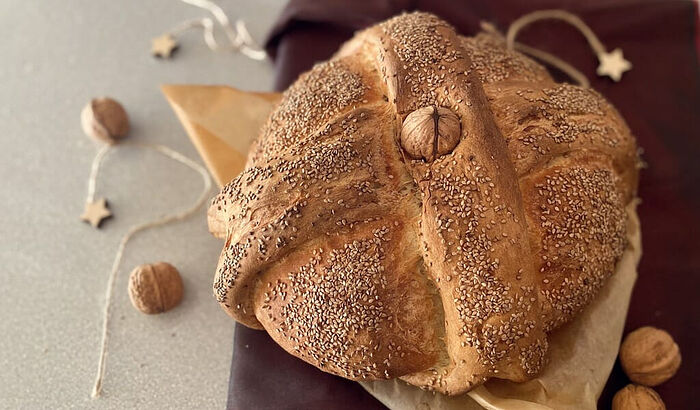 Photo: culinarybackstreets.com
Photo: culinarybackstreets.com
Greeks celebrate Christmas on December 25, according to the Revised Julian calendar. The Nativity in Greece is a nationwide holiday. New Year’s Day is celebrated less solemnly. Those who usually attend church services go to church to pray. The services in parish churches are held in the morning—Matins and the Liturgy. After the services, Greeks come home and sit down to eat.
By tradition Christ’s Bread (Christopsomo) is baked with a cross on top, decorated with nuts. Greeks do not have a specific Christmas dish. Recently, under Western influence, they have started to cook turkey. Previously, they roasted lamb or pork, and poorer families—domestic fowl. The necessary elements on the table are nuts, honey and dried fruits, different types of Christmas cookies, and pomegranates.
For the Nativity Greeks decorate their city streets and Christmas trees. In Greece decorating a Christmas tree is a late custom. At the Nativity they could decorate a “Christmas tree”: an ordinary stick to which ribbons and bells were tied, and in the seaside regions wooden ships specially cut for the festival were decorated. Then children went around their villages with such ships, singing carols. In some villages children still sing carols. True, ships specially decorated for the feast are now bought in stores, and caroling children walk with musical triangles. The holidays last five days from Christmas Day to New Year. There is a richly set table through this time. Christmas and New Year presents are not brought by Santa Claus (St. Nicholas) or Father Frost, but... by St. Basil the Great. His feast-day falls on January 1.
The Holy Land
Christian Arabs of Israel celebrate the Nativity very excitedly and merrily with fireworks, banquets in courtyards and streets, and open-air events; and the Orthodox, as a rule, celebrate together with Catholics, and then Catholics are invited by Orthodox on January 7. Orthodox Christians usually completely ignore the New Year and wait for the Nativity. At the moment in the Holy Land the celebrations are concentrated in Jerusalem and Nazareth—the city where the Savior’s childhood was spent, and in Bethlehem, where Christ was born. Now Bethlehem is a city in the Palestine not far from Jerusalem. Only tourists with foreign passports can get to Bethlehem. In Bethlehem, the Nativity is celebrated twice—on December 25 and January 7.
December 25 is celebrated by Catholics, who make up the majority of Bethlehem’s Christian population. Orthodox Christians and all who follow the Julian calendar celebrate on January 6 and 7. Festivities begin in the morning of January 6. A procession headed by the Patriarch of Jerusalem departs from the Jerusalem Patriarchate to Bethlehem. In ancient times, they walked (it’s only two hours’ walk from Jerusalem to Bethlehem), but now there is a line of cars.
On Christmas Eve, the Patriarch serves in Bethlehem. After the service, a parade of Arab Orthodox youth and scouts to the sounds of drumming and bagpipes passes through the streets. Scout groups prepare for the Christmas parade throughout the year. At about one in the morning everyone gathers in the Basilica of the Nativity and awaits the arrival of the Patriarch, who celebrates Matins, which passes into the Liturgy. There are two parallel services: in the church and below, in the crypt beneath the altar, where the cave of the Nativity is located. Downstairs there is a large chapel that can hold no more than fifty people. The service in the crypt is headed by one of the bishops. By five in the morning, after receiving Communion, people go home or to hotels.
Christian Arabs’ homes are decorated with Christmas trees and garlands on Christmas Eve. There is also a tradition in Bethlehem of making Nativity scenes and figures from local olive trees.

